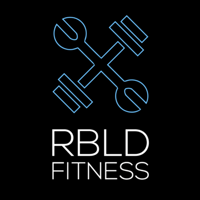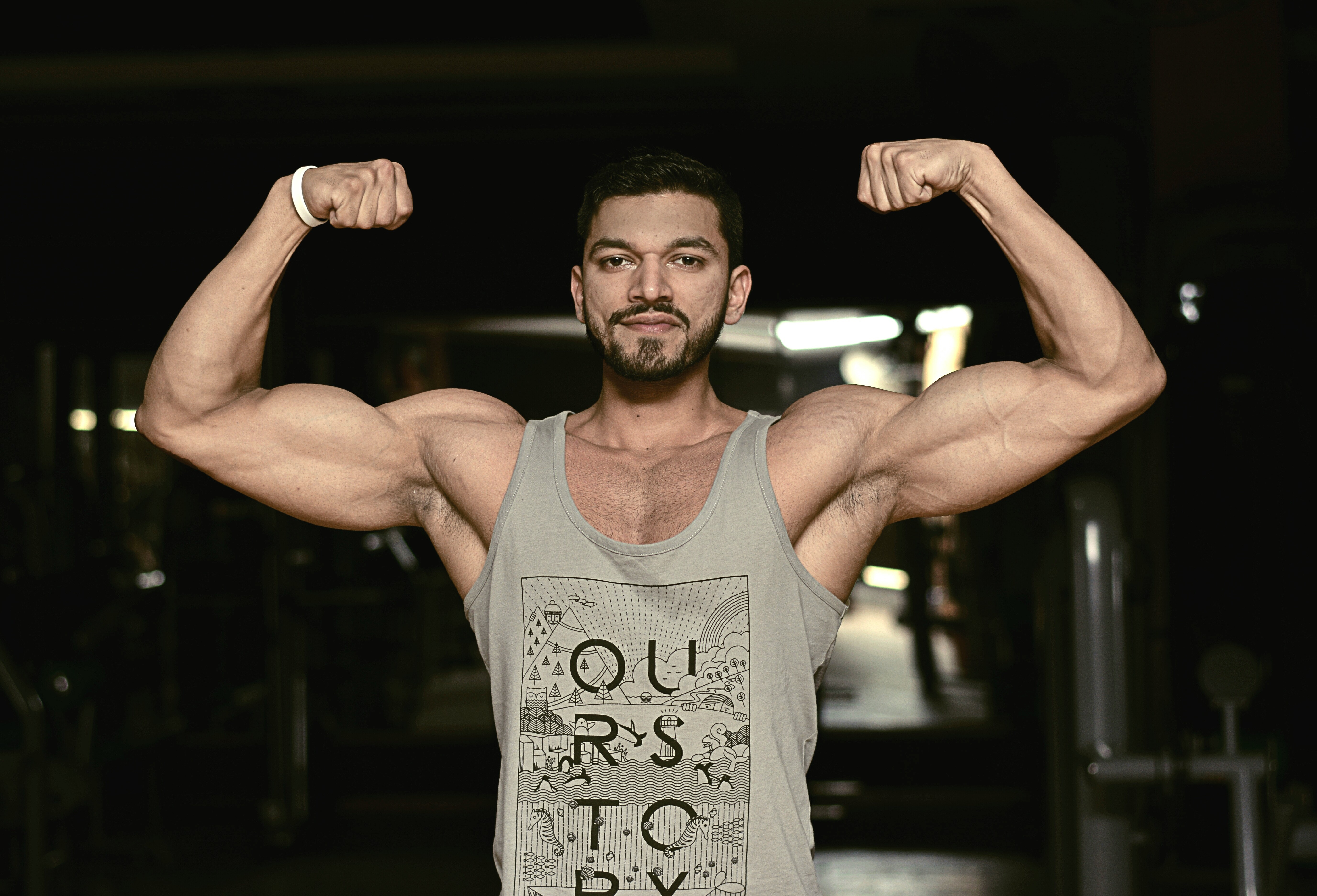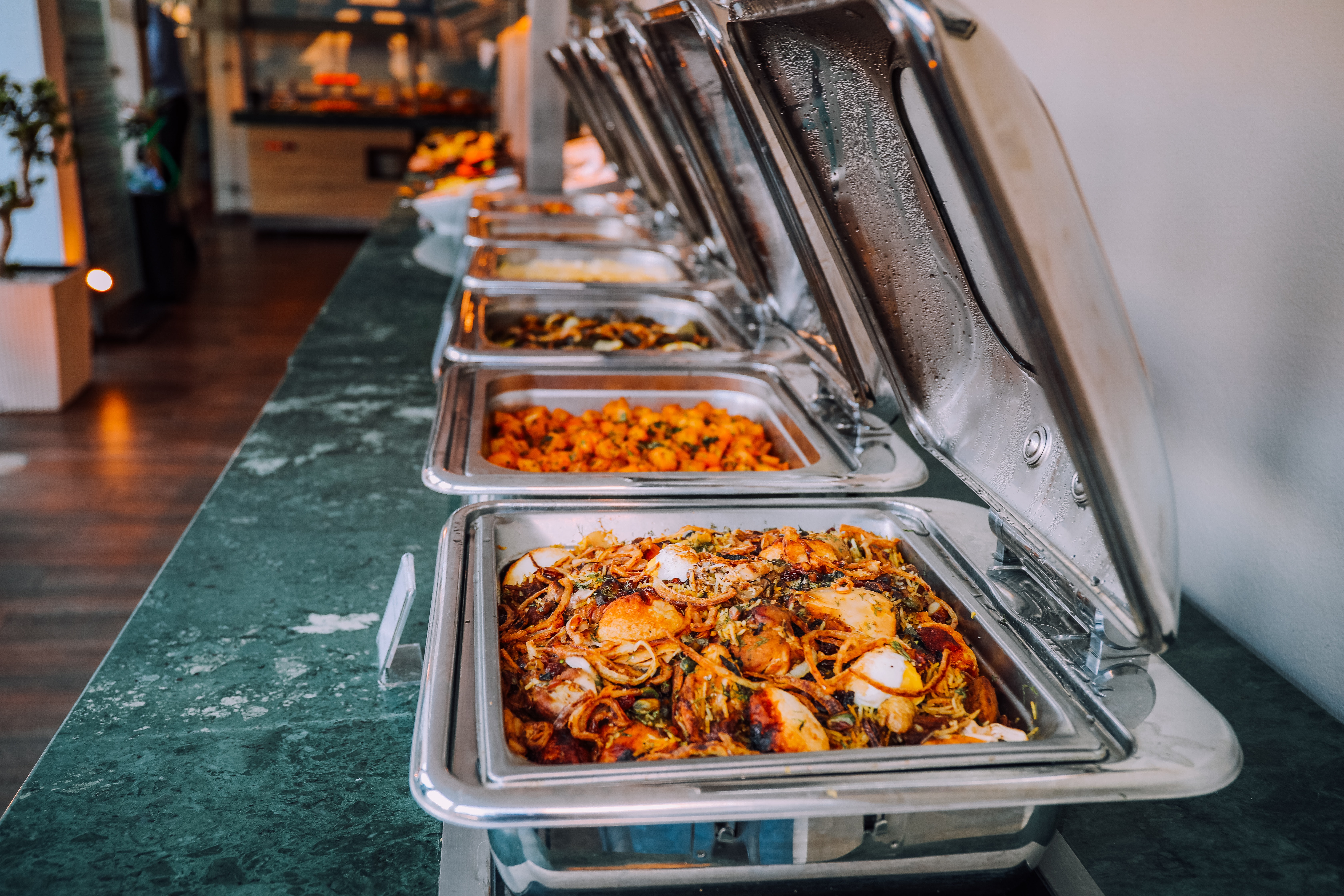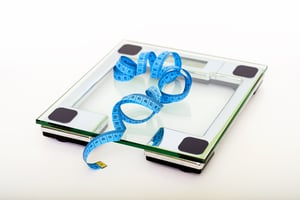5 Reasons Why Protein Is So Important
This article explains why consuming protein is so important for muscle growth, strength and mobility, balanced dieting and strategic weight loss or gain. In just a few minutes, you'll learn the science and strategies required to make huge changes in your diet immediately!
This is Why Protein Is Important
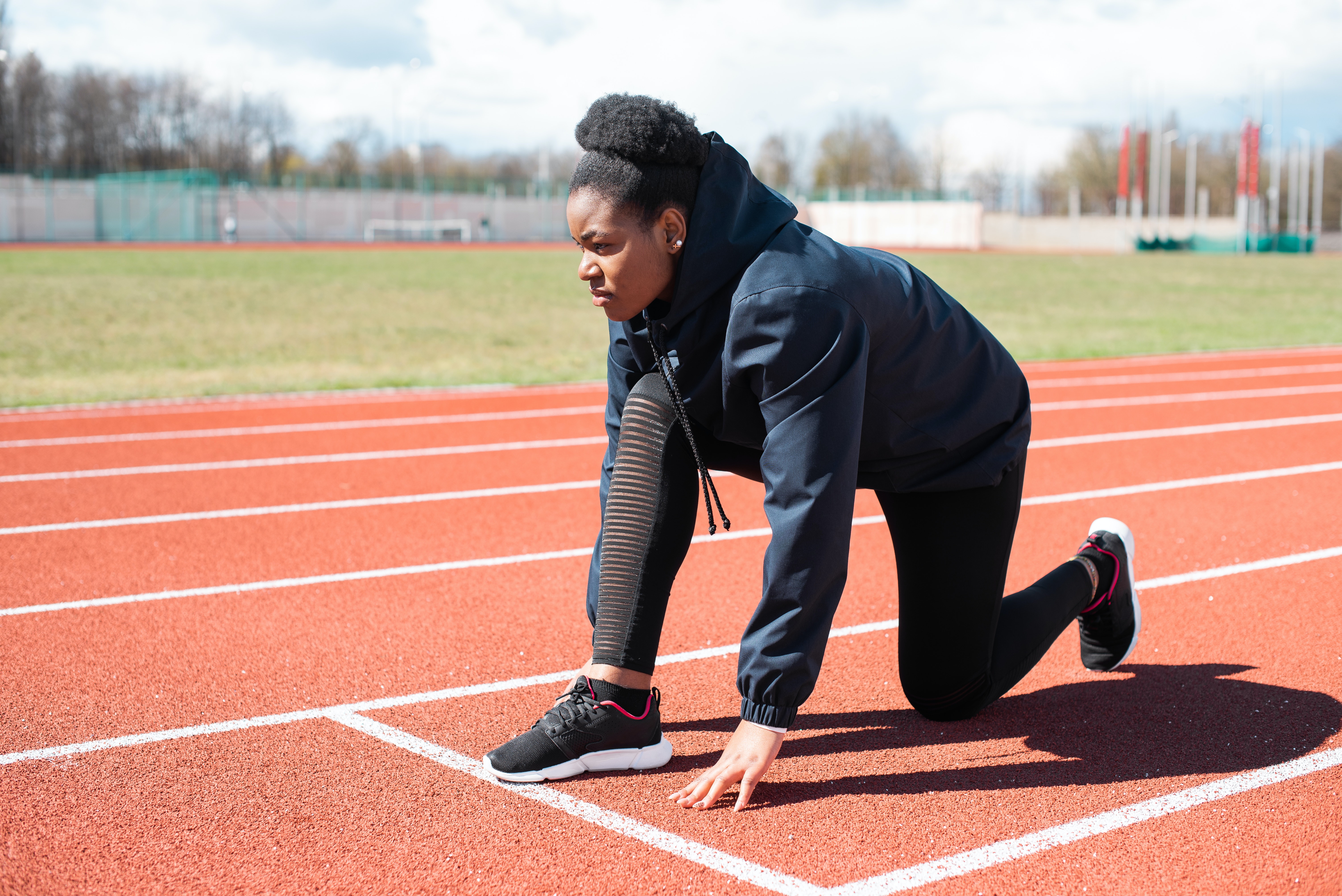
I consider a "high protein food" to be an individual food item with a ratio of protein that's about equal to or higher than the next highest macronutrient.
Example: Simply Nature's Edamame Spaghetti has a macro breakdown of 3.5 grams of Fat, 20 grams of Carbs, and 24 grams of Protein.
While this is a good source of high fiber carbohydrates as well, the amount of protein per serving is equal to or higher than the carbohydrates and dietary fat. Therefore, I would consider this a "high protein food".
A more extreme example of a "high protein food" would be boneless chicken breast which has a macro breakdown of:
- Fat: 1 gram
- Carbs: 0 grams
- Protein: 52 grams
This doesn't mean that other foods with sources of protein that are lower than carbs or fat are in fact "low in protein" per se. It's just how I define it personally.
At the end of the day, the goal for each person should be to consume an adequate amount of protein for the reasons you'll now read about.
1. Protein is Needed to Grow Body Tissue/Muscle Mass
Our bodies are constantly going through the metabolic process of muscle protein breakdown (aka the reduction of muscle mass). Protein is an essential macronutrient that primarily enables us to achieve muscle protein synthesis (aka the growth of muscle mass).
To outpace muscle protein breakdown with muscle protein synthesis, we need to overload our muscles through exercise (strength training is uniquely beneficial in this area) and feed our bodies with adequate amounts of protein.
Simply put:
- Protein + Exercise = Muscle mass maintenance/growth

2. Muscle Improves Strength, Balance and Mobility
Not only are you more physically capable when you're stronger, but you are also more likely to reduce inflammation, stress on joints, etc. Improved physical ability doesn't just mean that it's not just easier to lift heavy weights or do something athletic.
More importantly, it's easier to do the simple and life-giving things on a daily basis like:
- Standing up and down
- Play with your children or grandchildren
- Walk up and down the stairs
- Walk, hike, travel and explore
- Exercise and strengthen your cardiovascular system
To recap:
- Protein + Exercise = Muscle mass
- Muscle mass = Strength, balance and mobility
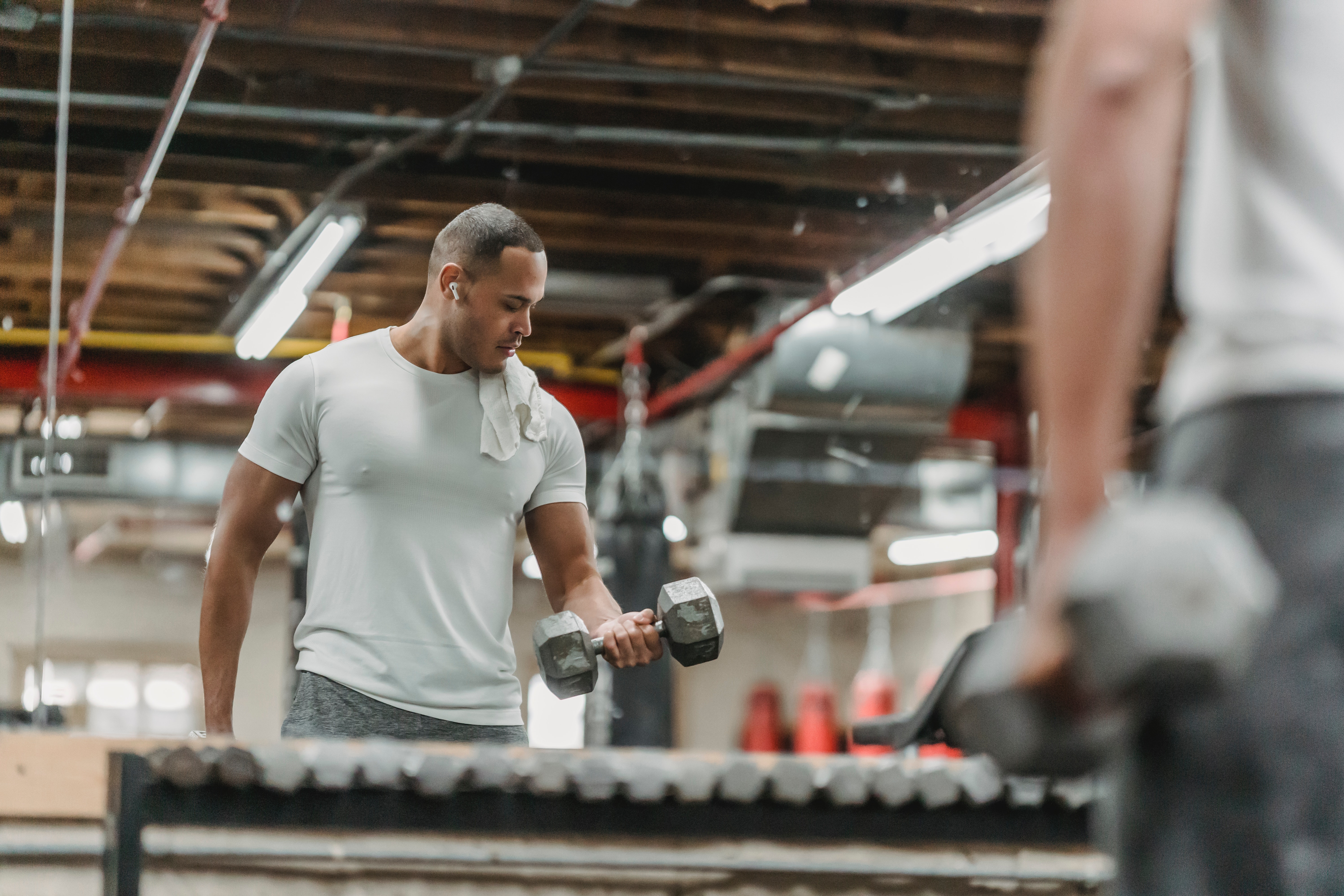
3. Muscle Improves Physique and Mental Health
Physique
Protein by itself doesn't have physique altering qualities by itself. You need to workout and diet well enough overall that you achieve the muscle mass:body fat ratio that gives you the body you're looking for.
But once you do exercise and get your energy balance aligned with your body weight/physique goals, consuming an adequate amount of protein will be absolutely crucial to building and maintaining the amount of muscle mass required to build the new and improved physique that you're looking for.
Mental Health
Most of us would agree that we feel better mentally when we regularly exercise and eat more consciously, right? Well, there are a couple of primary reasons for that:
- Endorphins and Endocannabinoids - Researchers believe that it's these two neurotransmitters working together that give us the feeling of calm and euphoria after a challenging run or other workout.
- Myokines - Commonly referred to as "Hope Molecules", myokines are one of several hundred cytokines or other small proteins (~5–20 kDa) and proteoglycan peptides that are produced and released by skeletal muscle cells (muscle fibers) in response to muscular contractions. Once in the bloodstream, they travel to the brain and positively influence our ability to regulate emotions, fight depression, sleep better, and more!
To recap:
- Protein + Exercise = Muscle mass
- Muscle mass = Strength, balance and mobility
- Challenging your strength, balance and mobility = Improved physique and mental health
You may have know some of this, but did you know that protein - by itself - is incredibly helpful in the fat loss phases of our diets as well?
Read on!
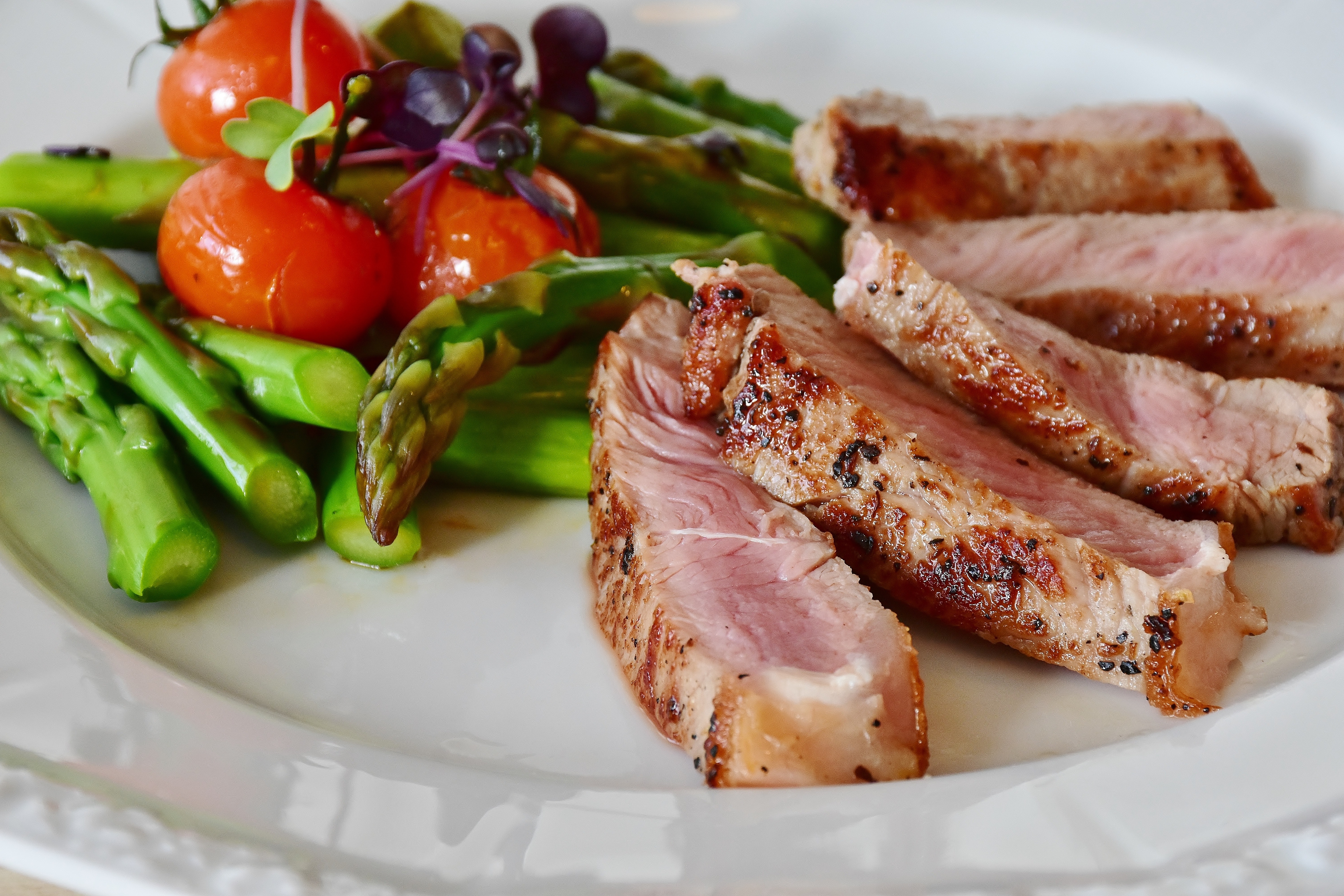
4. Protein is More Filling and Lower in Calories
Protein isn't just necessary for improving one's physique and increasing muscle, strength, and physical ability. It's actually very useful when it comes to aiding in fat loss efforts as well.
High protein sources are usually higher on the Satiety Index. Satiety is measured by:
- Percentage (%) of Protein per calorie in the food - Foods with a higher protein percentage have been shown to be more filling.
- Energy Density - Studies show that eating foods with fewer calories per gram lead to less caloric consumption overall.
- Fiber - Fiber is a non-digestible carbohydrate that stretches the stomach and makes us feel full.
- Hedonic Factor - A score reduction given to foods that are highly decadent and calorie dense.
To summarize, protein is more filling and lower in calorie per gram than most foods. To give you a good comparison of foods, Dietdoctor.com has a fantastic article listing nearly 125 foods and their corresponding Satiety Index Score:
| Food | Score |
| Spinach | 100 |
| Asparagus | 96 |
| Nutritional Yeast | 95 |
| Lupini Beans | 93 |
| Lentils | 91 |
| Canned Tuna | 90 |
| Egg Whites | 90 |
| Shrimp | 90 |
| White Fish | 90 |
| Edamame (Green soybeans) | 89 |
| Plain nonfat Greek Yogurt | 89 |
| Tofu | 89 |
| Tofu (Extra Firm) | 89 |
| Brussel Sprouts | 88 |
| Lean Steak | 88 |
| Pork Tenderloin | 88 |
| Seitan | 88 |
| Cauliflower | 87 |
| Chicken Breast with Skin | 87 |
| Low fat (2%) cottage cheese | 87 |
| Wild Salmon | 87 |
| Anchovies | 85 |
| Low fat cheese | 85 |
| Plain low fat Greek yogurt | 85 |
| Broccoli | 84 |
| Chicken Drumstick w/ Skin | 83 |
| Regular (4%) Cottage Cheese | 83 |
| Green Beans | 81 |
| Ham | 81 |
| Pinto Beans | 81 |
| Pork Chops | 81 |
| Broth | 80 |
| Salmon, farmed | 80 |
| Oysters | 78 |
| Mackerel | 77 |
| Part-skim mozzerella | 74 |
| Plain full fat (5%) Greek yogurt | 74 |
| Chicken Wing with Skin | 73 |
| Whole Eggs | 72 |
| Garbanzo Beans/chickpeas | 71 |
| Part-skim ricotta | 69 |
| Lamb Chops | 68 |
| Ribeye Steak | 68 |
| Prime Rib | 67 |
| Blackberries | 63 |
| Tomatoes | 63 |
| Whole Egg fried in butter | 62 |
| Coffee | 60 |
| Tea (Black, green, or herbal) | 60 |
| Water | 60 |
| Cheese (Whole Milk Mozzerella) | 59 |
| Swiss Cheese | 58 |
| Oatmeal | 56 |
| Beets | 55 |
| Brie/camembert Cheese | 54 |
| Pork Ribs | 54 |
| Bacon | 53 |
| Pumpkin | 53 |
| Rasberries | 53 |
| Battered, deep-fried fish filet | 52 |
| Bleu, Roquefort Cheese | 52 |
| Buckwheat groats | 51 |
| Cheddar Cheese | 51 |
| Pork Sausage | 51 |
| Salami | 51 |
| Diet Soda | 50 |
| Lemon | 50 |
| Feta | 49 |
| Wild rice | 49 |
| Carrots | 47 |
| Onions | 47 |
| Egg Yolk | 45 |
| Chorizo | 44 |
| Quinoa | 44 |
| Sweet Potatoes | 44 |
| Whole-wheat bread | 44 |
| Corn | 43 |
| Oranges | 42 |
| Liverwurst | 41 |
| White Potatoes | 41 |
| Avocado | 39 |
| Peanuts | 39 |
| Bananas | 37 |
| Hot Dog | 37 |
| Olives | 36 |
| Battered, deep-fried Shrimp | 35 |
| Fruit Smoothie | 32 |
| 100% Orange Juice | 28 |
| Mocha | 28 |
| Soft Pretzel | 28 |
| Frappucino | 26 |
| Grapes | 26 |
| Raisins | 26 |
| Gatorade | 25 |
| Lemonade | 25 |
| Low Fat Graham Cracker | 25 |
| Soda | 25 |
| Hazelnuts | 24 |
| Jelly | 23 |
| Cashews | 22 |
| Saltine Cracker | 22 |
| Cream | 21 |
| Honey | 21 |
| Low Fat Breakfast Pastry | 21 |
| Macadamia Nuts | 21 |
| Sweetened Breakfast Cereal | 21 |
| Brazil Nuts | 20 |
| Sugar | 20 |
| Walnuts | 20 |
| Mayonnaise | 14 |
| Butter | 12 |
| Ice Cream | 12 |
| Chocolate cupcake | 11 |
| Coconut oil | 11 |
| French Fries | 11 |
| Olive oil | 11 |
| Pie | 10 |
| Croissant | 9 |
| Frosted layer cake | 7 |
| Tortilla chips | 6 |
| Candy bar | 4 |
| Cheesecake | 4 |
| Glazed doughnut | 2 |
| Chocolate Chip Cookies | 1 |
Did any food on this list surprise you? I know it did for me.
If you'd like a more robust breakdown of the concept of satiety, I'd recommend this article, but for the sake of this section, all you need to know is that high-protein sources are often more filling and lower in calorie than low-to-average protein sources.
As a byproduct, they can be very helpful to those seeking to reduce their calorie intake and lose fat as a byproduct.
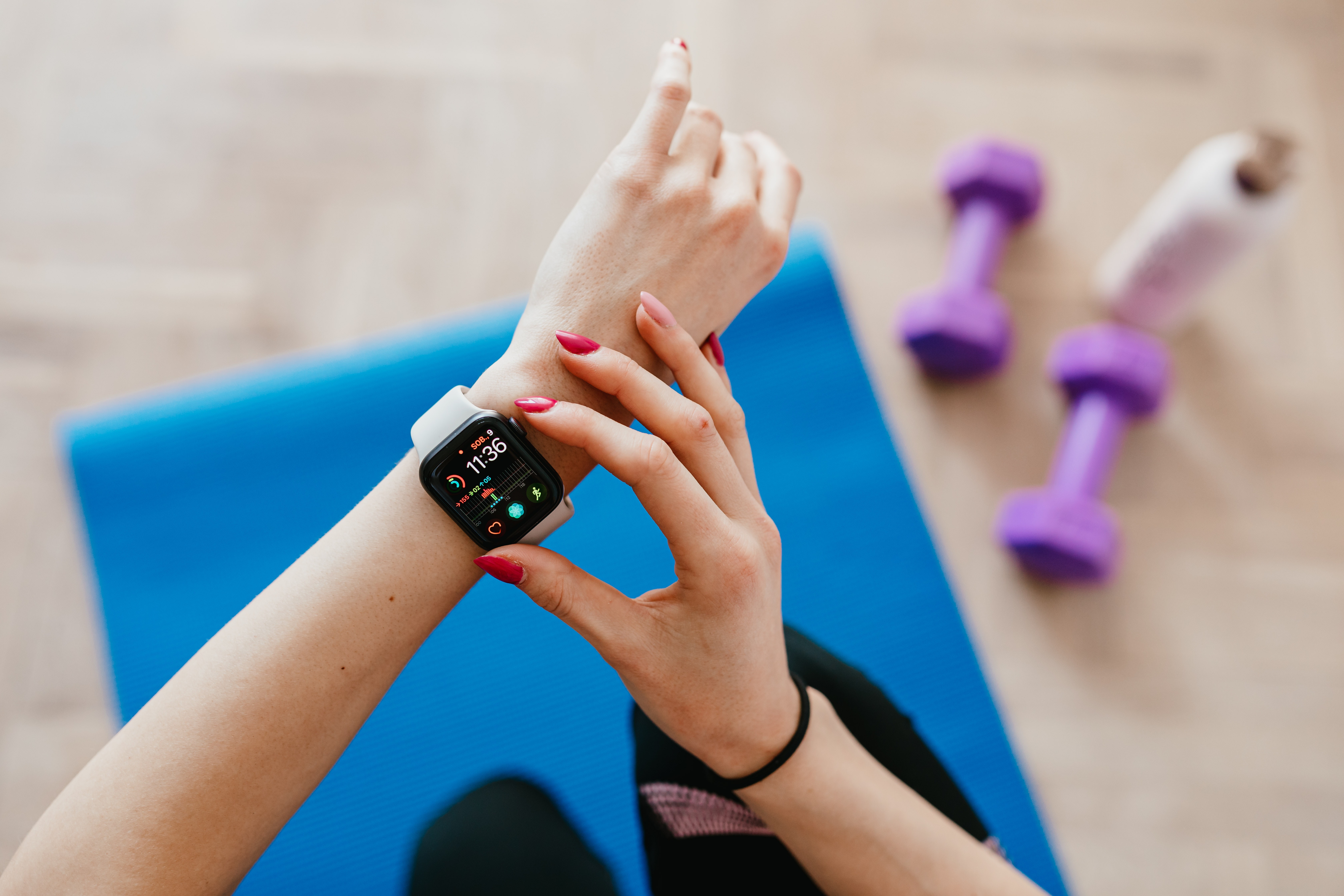
5. Protein Helps Raise Your Basal Metabolic Rate (Daily Calories Burned)
We've established that consuming adequate amounts of protein + overloading muscles through exercise = muscle growth. And muscle growth has benefits like improving strength, balance, mobility, and physique.
Additionally, it's helpful to know that muscle mass is metabolically active tissue - meaning that it aids in the process of maintaining homeostasis and using body fat as a primary energy source. The more muscle mass per pound of body weight typically correlates to a higher Basal Metabolic Rate (BMR - or calories burned in a rested state) and Total Daily Energy Expenditure (TDEE -or- total daily calories burned), and this improves the likelihood of long-term success in maintaining your desired body weight.
So, once more:
Protein + exercise = More muscle mass
More muscle mass = Strength, mobility, aesthetic and an improved ability to manage body weight
All that's left to discuss is our recommendations on:
- How much protein to consume
- High-protein food sources
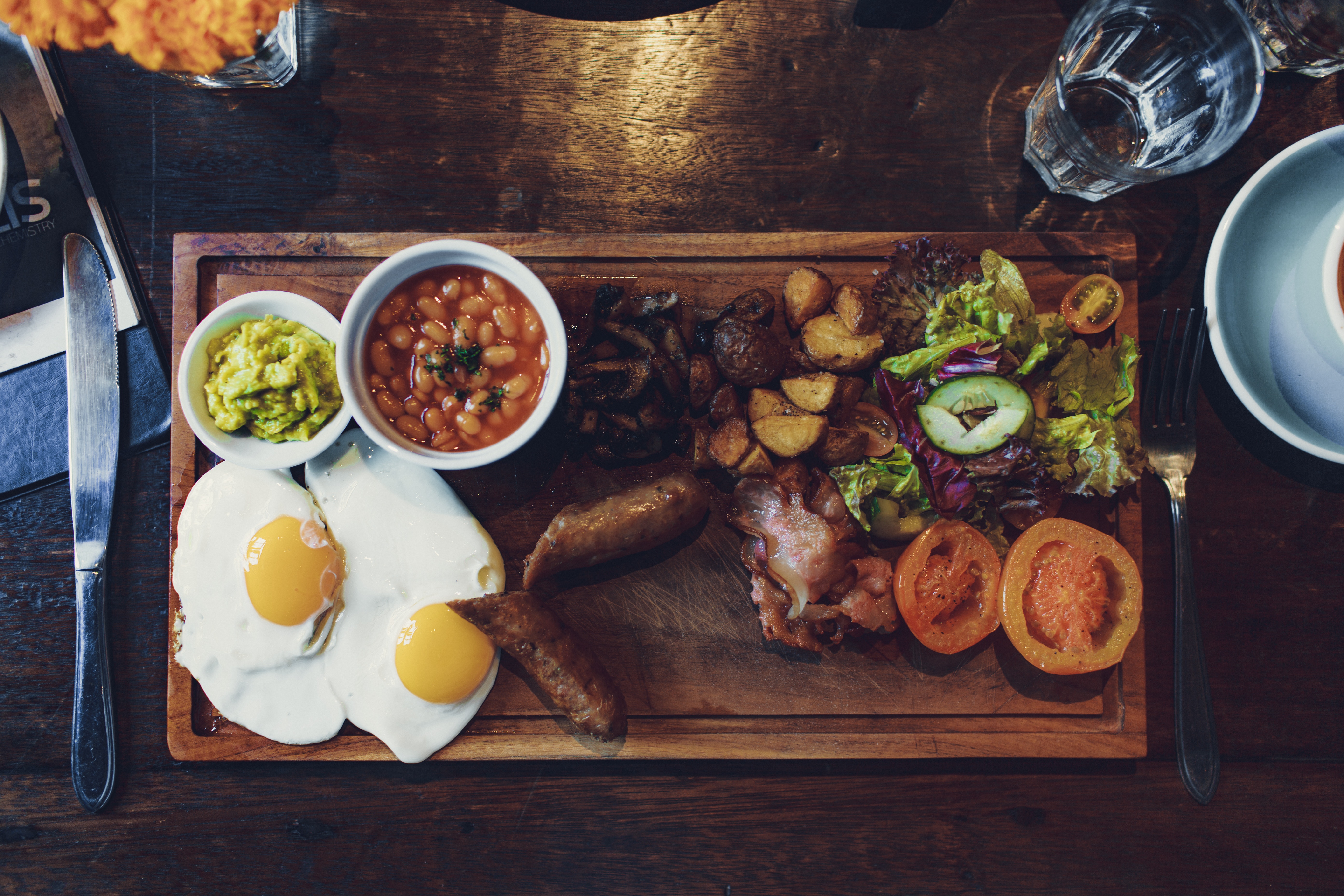
How Much Protein Should I Eat?
Since we've established that consuming adequate amounts of protein is important to any diet, then it begs the question: How much protein should I eat?
Here's a Guide:
For reference: 1 gram of Protein = 4 Calories
The Mayo Clinic suggests that 10-35% of our daily calories should come from protein. With a 2,000 calorie diet, this would be between 40 to 175 grams (160 to 700 calories) - a fairly wide range. This range exists because protein needs adjust slightly as we diet for fat to loss, maintain our bodyweight or gain bodyweight.
During a Fat Loss Phase (Calorie Deficit):
Most studies suggest that 1–1.4 grams of protein per lb of body weight (2.2–3.0 g per kg) is enough to maintain muscle mass in a fat loss (calorie deficit) phase. For someone who is 170 lbs, this is 170-238 grams of protein.
During fat loss (calorie deficit) phases, I typically recommend that my clients aim for a minimum of 35 to 40% of their total calorie intake to come from protein (1,700 calories consumed x 40% / 4 calories per gram = 170 grams of protein. This is primarily due to the fact that they are actively strength training as well, and the rate of muscle protein breakdown is higher. To offset and outpace muscle protein breakdown with muscle protein synthesis, it's very important to get adequate protein intake.
During a Weight Maintenance or Weight Gain Phase (Calorie Maintenance or Surplus)
If I'm coming out of a fat loss phase and entering into a weight maintenance phase (consuming the same number of calories as I burn), I typically keep my protein consumption about the same as it was during the calorie deficit, but I increase my calories through additional carbohydrate intake. If you're low-carb, then you might simply increase your dietary fat intake, but that's something you should work out with your doctor and nutritionist based on their recommendations for your overall health.
If I'm entering into a weight gain phase (Consuming about 10% higher than TDEE maintenance), my (Teddy) protein intake is going to be around 30% or more of my overall calories, but I typically increase my calorie intake via complex carbohydrates and the like. This works for me because, in a surplus, I'm consuming about 3,000 calories per day, and 30% of 3,000 is 225g of Protein (1.32x my body weight number in grams of protein).
A Note About Carbs and Fat
Consuming enough protein is a non-negotiable for anyone in any fitness journey, phase, etc. A person's carbohydrate and dietary fat consumption, however, is entirely up to them based on dietary restrictions, preferences, and overall health implications. Just remember that our bodies turn to either carbohydrates (glucose) or fat as our primary sources for energy and restoration.
NOTE: Always default to the diet which your doctor or dietitian recommends for you based on your goals and dietary restrictions. The information above is simply a guide based on our research, personal practice and coaching.
"Good" Sources of Protein
Remember that I defined a "high protein food" as an individual food item with a ratio of protein that is about equal to or higher than the next highest macronutrient (Protein:Fat:Carbs).
With that said, I recognize that people have different dietary requirements and preferences that make that ratio difficult to come by, so I shortlisted some of the most common protein-rich foods I've eaten across multiple food categories:
Meat
- Bison
- Chicken
- Lean Beef
- Pork Tenderloin
- Sirloin Steak
- Turkey
Seafood
- Halibut
- Salmon (Atlantic)
- Shrimp
- Tilapia
- Tuna (in water)
- White Fish
Dairy & Eggs
- Cottage Cheese
- Egg Whites
- Greek Yogurt
- Milk
- Paneer
- Whole Egg
Vegetarian & Vegan
- Black Bean Spaghetti
- Edamame
- Edamame Spaghetti
- Peanut Butter
- Peanut Butter Powder (PB Fit)
- Protein Powder (Pea/Vegan)
- Seitan
- Soybeans
- Spirulina
- Tempeh
- Tofu
- Vegan Meat Substitutes
- Watercress
Supplemental
- Protein Bars
- Protein Cereal
- Protein Pancakes
- Protein Powder (Whey)
- Protein Powder (Pea Protein)
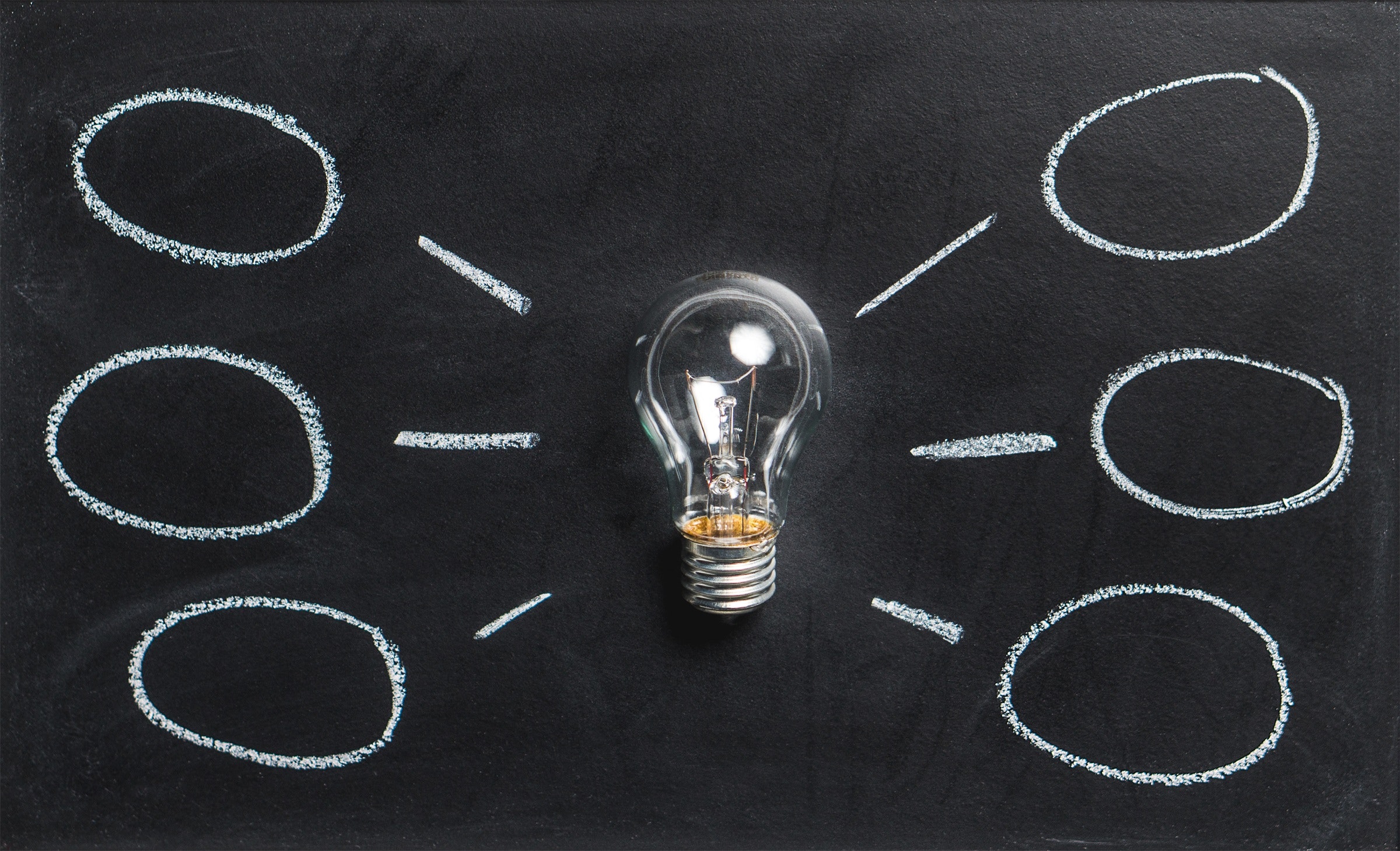
Summary
- Protein is needed to build muscle mass and other body tissue
- Muscle improves strength, balance, mobility and more
- Muscle and exercise improves physique and mental health
- Protein is helpful in dieting because it's more filling and lower in calories
- Protein + Exercise = Muscle. More muscle mass raises BMR and helps with weight loss
- Depending on the diet phase, you should aim to consume 1-1.4 grams per lb of bodyweight
- There are tons of protein-rich options in every food group. Don't miss out!
Now you're ready to shop for your weekly groceries!

Teddy Woolsey
I am the owner of the RBLD Fitness Unlimited Coaching Program and RBLD Fitness App
I also write about the intersection of fitness and sustainable behavior change
Let's connect on Instagram: @tedwoolsey
Our team at RBLD Fitness is here to help you at any time, whether it's through our flexible and affordable mobile app or if you're looking for a more hands-on coaching experience.
Visit our page to learn more.
